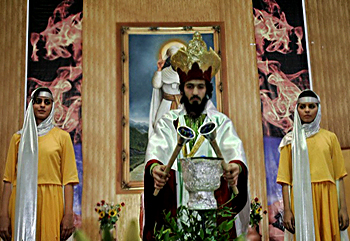 Parsi Sects in India consists of the Shehenshais and the Kadmis. These two different sects however do not differ on any point of faith, as the Protestants do from the Romanists or the Romanists again from the Greek Church; nor are they distinguished like the different castes in Hinduism, or the Shias and Sunnis in Islam. Their religious ceremony and forms of worship, as well as all the tenets of their religion, are the same in every respect. They reason behind the division of the two sects is merely a difference as to the correct chronological date for the computation of the era of Yazdezard, the last king of the ancient Persian monarchy. No such contention, it may be stated, exists among the Zoroastrians in their fatherland.
Parsi Sects in India consists of the Shehenshais and the Kadmis. These two different sects however do not differ on any point of faith, as the Protestants do from the Romanists or the Romanists again from the Greek Church; nor are they distinguished like the different castes in Hinduism, or the Shias and Sunnis in Islam. Their religious ceremony and forms of worship, as well as all the tenets of their religion, are the same in every respect. They reason behind the division of the two sects is merely a difference as to the correct chronological date for the computation of the era of Yazdezard, the last king of the ancient Persian monarchy. No such contention, it may be stated, exists among the Zoroastrians in their fatherland.
The Parsis count their year by three hundred and sixty-five days. Every month among the Parsis includes a calendar month of thirty days, starting with the month of Fravardin and ending with Spendarmad. With the end of three hundred and sixty days, five days, which are called Gathas, are added, thus forming three hundred and sixty-five days in a year. The five hours and fifty-four seconds are neglected in their reckoning, so, in order to accord with the accurate solar year, the ancient Persians are said to have, at the end of every one hundred and twenty years, made the `Kabisa` or intercalation, that is to say, included a month to the period. The gave up the Kabisa after they lost the control of their land, while the Parsis are said to have once intercalated during their stay in Khorassan, and this fact has originated the two sects.
In 1090, one Jamasp, a knowledgeable Zoroastrian from Persia, reached Surat to undertake the instruction of the `mobeds` or priests, and he first discovered that his co-religionists in India were behind a month to their brethren of Iran in beginning their new year, but importance was not given to it at that period and all proceeded smoothly as before. In the year Yazdezard 1114, or 1746 A.D., an Irani by the name of Jamshid, together with a few `mobeds` or priests, introduced the date as abided by the Persian Zoroastrians and called themselves Kadmis. The majority of people who became known as Shehenshais, stuck to their old date. With the passage of time, the adherents of Jamshid gained a little accession to their number.
Thus, it can be said that the Parsis were divided into two sects in Surat. For some time the difference between the two sects did not produce any bad feeling or untoward results. But gradually this harmony was troubled by the appearance of a more bigoted leader in each party; Dhanjisha Manjisha among the Kadmis and Mancherji Kharshedji Seth among the Shehenshais.
Even if there is no major difference between the two Parsi Sects in India as far as religious ceremonies and mode of worship are concerned, however, there is some minor dissimilarity. The vowel pronounced by the Shehenshais as `u` is pronounced by the Kadmis as `ee`. Thus, while the Kadmis would say `Ahee` the Shehenshais would say `Ahu`. In the forms of prayers in Pazand there are few differences, but they do not affect the tenets religion professed by both the sects. A Parsi, while praying, is required to recite the names of the month and day on which he offers his petition. The mention of the date, therefore, is the major distinction between the prayers of a Kadmi and a Shehenshai. Different festivals of the Parsis are celebrated by both sects in exactly the same manner, only on different dates.




















